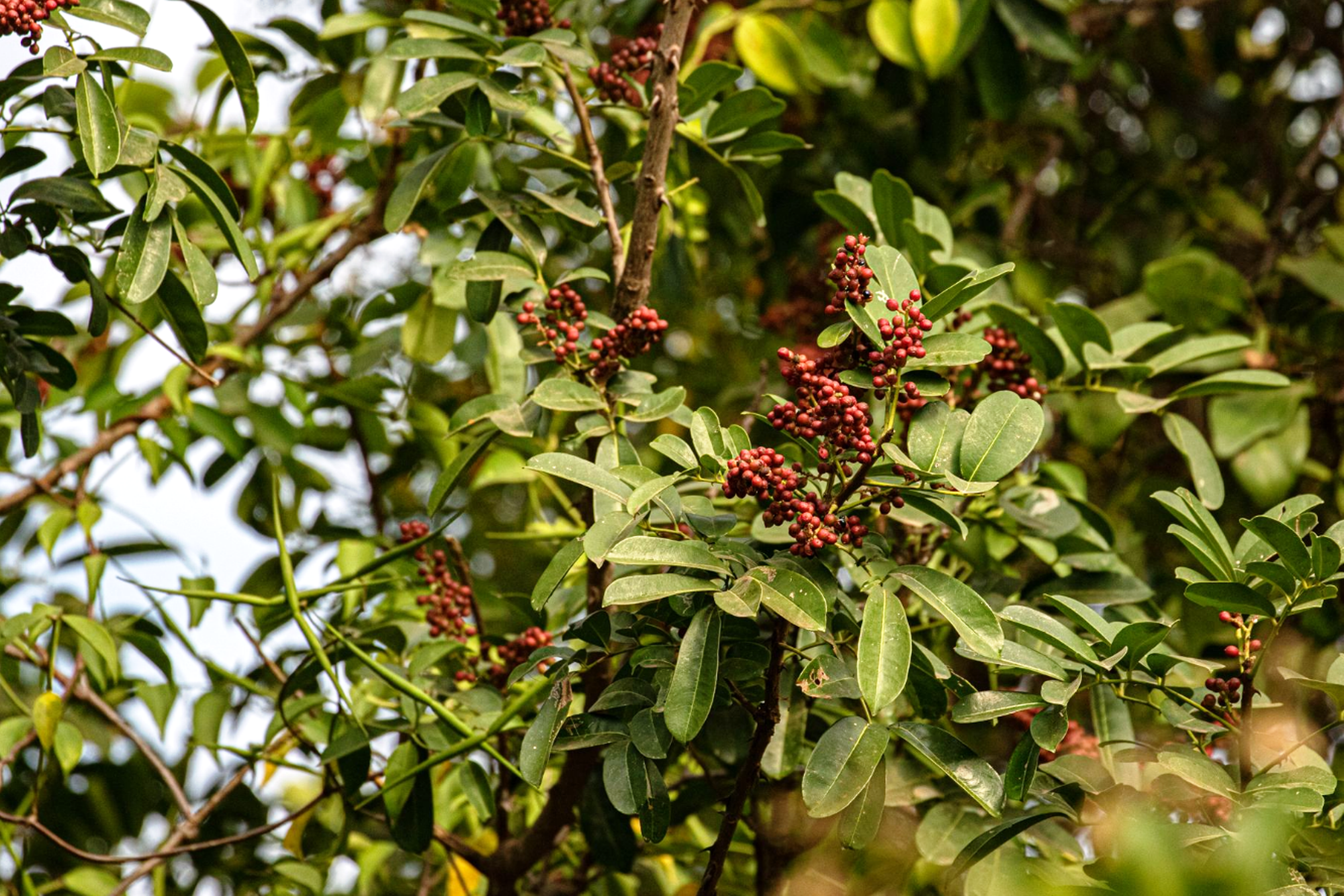Zanthoxylum zanthoxyloides

|
|
Zanthoxylum zanthoxyloides Common Names: Senegal Prickly-Ash, Artar Root,
Candlewood, Fagara Scientific
Classification Kingdom: Plantae Clade: Tracheophytes Clade: Angiosperms Clade: Eudicots Clade: Rosids Order: Sapindales Family: Rutaceae Genus: Zanthoxylum Species: Z. zanthoxyloides Binomial Name: Zanthoxylum
zanthoxyloides (Lam.) Zepern.
& Timler Synonyms: Fagara zanthoxyloides Lam., Zanthoxylum senegalense DC. Morphological Description Zanthoxylum zanthoxyloides, commonly known as Senegal Prickly-Ash or Artar Root, is a thorny
shrub or small tree growing 3–12 m tall with a trunk diameter up to 25 cm. It
is characterized by: · Bark: Pale grey to yellowish, fissured, with conical spines up to
2 cm long · Leaves: Pinnate, 10–20 cm long, with 5–11 elliptic leaflets, glossy
green, aromatic when crushed · Flowers: Small, yellowish-green, 3–5 mm wide, in axillary panicles,
blooming seasonally · Fruit: Spherical follicles, 5–8 mm in diameter, green turning red
to brown, aromatic Distribution and Habitat Zanthoxylum zanthoxyloides is native to tropical West Africa, spanning Senegal, Gambia,
Ghana, Nigeria, Cameroon, and Burkina Faso. It thrives in: · Habitats: Savannas, forest edges, riverbanks, dry woodlands · Climate: Tropical, with rainfall of 800–1,500 mm annually,
temperatures of 25–35°C · Soil Conditions: Well-drained sandy or loamy soils (pH
5.5–7.0) · Elevation: Sea level to 1,000 m Ethnopharmacology Zanthoxylum zanthoxyloides, commonly known as candlewood or African chewing stick, is a
well-known medicinal plant in West African traditional medicine, especially
valued for its oral health benefits and diverse therapeutic uses. The roots,
bark, leaves, and stem are traditionally used for their antimicrobial,
anti-inflammatory, analgesic, antioxidant, antimalarial, antidiabetic, and
antiulcer properties. It is widely used for treating toothaches, gum
infections, malaria, fevers, digestive problems, rheumatism, and skin
infections. The root is often chewed as a natural toothbrush to maintain oral
hygiene due to its antibacterial effects. Phytochemical investigations have
revealed compounds such as alkaloids, flavonoids, tannins, saponins, and
essential oils, which contribute to its pharmacological effects. While its
traditional uses are well-documented, further scientific research and clinical
trials are necessary to confirm its efficacy and establish standardized
medicinal applications. · Antimicrobial: Root extracts inhibit Streptococcus mutans (MIC 125 µg/mL), used in Nigeria for
toothaches (Nwankwo et al., 2017). · Anti-inflammatory: Stem bark reduces paw edema in rats (43%
at 200 mg/kg), used in Ghana for arthritis (Goodman et al., 2019). · Antioxidant: Leaf extracts scavenge DPPH radicals (IC₅₀ 28 µg/mL), used
in Togo for oxidative stress (Koné et al., 2012). · Analgesic: Root bark alleviates acetic acid-induced pain in mice (60%
at 300 mg/kg), used in Mali for pain relief (Goodman et al., 2019). · Antisickling: Study shows that Divanilloylquinic acids from the plant reverse
sickle cell shape (80% at 10 µg/mL), used in Burkina Faso for sickle cell
disease (Ouattara et al., 2009). · Anthelmintic: Fruit is used in Ghana for worms. ⚠ Toxicity Profile: No acute toxicity at traditional doses (LD₅₀
> 5,000 mg/kg in rats), but high doses of alkaloids (e.g., fagaronine) may
cause hepatotoxicity in rats. Overuse may lead to gastrointestinal distress;
use under guidance is recommended (Acheampong et al., 2021). Phytochemistry The plant’s medicinal
properties stem from a rich phytochemical profile: · Alkaloids: Fagaronine, chelerythrine, with antisickling and
antimicrobial effects · Flavonoids: Hesperidin, quercetin, providing antioxidant benefits · Tannins: Astringent compounds aiding wound healing · Saponins: Contribute to anthelmintic properties · Essential Oils: Citronellol, geraniol, with antimicrobial
action · Phenolics: Divanilloylquinic acids, key for antisickling activity Roots and bark are
particularly rich in bioactive compounds (Tine et al., 2017). Additional Uses · Culinary: Fruits used as a spice in Senegal, adding a peppery flavor · Economic: Wood used for tools and construction in Nigeria · Cultural: Root bark used as chewing sticks in Mali for oral hygiene · Ethnoveterinary: Leaves treat livestock infections in
Cameroon References
External Links More Pictures |
|
| Compounds of Zanthoxylum zanthoxyloides | |
| References |